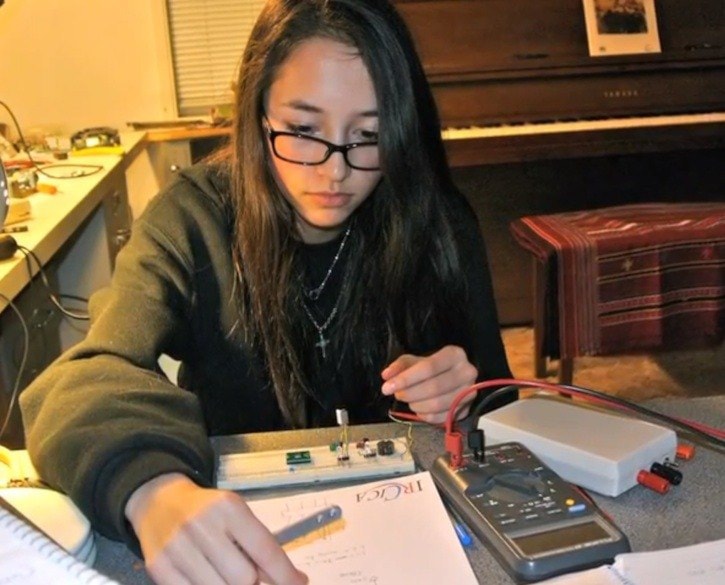At 15 years old, Victoria, B.C.'s Ann Makosinski has invented something nobody else thought of – at least, not in the same way.
Makosinski's 'hollow flashlight' is a battery-free illuminator, an ever-ready device powered by the heat of human hands which can stay lit for 20 minutes (according to Makosinki's own test run).
The YYJ youth received a modicum of attention in June, when she was picked to be the only Canadian at Google's Science Fair at their campus in Mountain View, Calif. (which starts Sept. 22). Then, she was the subject of Digital Journal's article, "Will Ann Makosinski change the world?" (A lofty title, no?)
Now, her profile is exploding.
After an interview with Mashable, published on Tuesday and titled "This 15-Year-Old's Science Project Will Light Up Your World", Makosinski enters Google's teenage showcase with potential corporate support in tow.
"A few companies are corresponding with my parents," Makosinski told Mashable's Eric Larson. "But there are still quite a lot of improvements to be made before I put this to commercial use. I'm also working on getting a patent right now — so we'll take it slowly, I guess."
------------------------------------------------------------

Makosinski shows off her creation.

A side, split view of the 'hollow flashlight'.

An inside-outside view of Makosinski's 'hollow flashlight'.
------------------------------------------------------------
The Mashable article currently has over 13,800,000 total shares, plus prime mention on the site's Facebook page and the page of its affiliate site, Social Good.
The 'hollow flashlight' – which Makosinski has defined as "ergonomic" and "thermodynamically efficient" – runs with a coating of Peltier tiles, which are able to convert hand warmth into energy. Makosinski says temperature comes into play, because there needs to be a five-degree difference between the user's hand and the room's – or atmosphere's – ambient temperature.
In Makosinski's tests, the flashlight works when the tiles are warm on one side – so, from your hand – and cold on the other.
"They're these flat tiles," she told Larson, "and if your body heat runs on one side, and you cool the other side, it will produce electricity.
"For this first project, I heated one side with a candle and cooled the other side, so there was a very large temperature differential. I noticed that the greater the temperature differential, between the hot and the cold sides, the more power was produced.
"As humans, we radiate enough heat that's close to 100 watts' worth of lightbulbs. So I thought, 'Why not take advantage of that?' The flashlight just seemed like the best application."
She will head to Google's campus as one of only five finalists in the Age 15-16 category and – again – the competition's only Canadian. There are 14 finalists in the Fair, in total.
Other finalists' projects (in the Age 15-16 category) include Enhanced Solar Cells, a Green Method for Clean Water, a Treatment for Liver Inflammation, and 'Creating Bioplastics from Banana Peel' (which has won the event's 'Voter's Choice').
"I am super excited to represent Canada at the Google-wide Science Fair, and as I'm the lonely Canadian, I guess there's a lot of Canadian pride on me, as well."
Makosinski displayed her flashlight in a video in August, which was uploaded by Google to their Science Fair channel. She also first publicly unveiled the device – and provided a more in-depth scientific explanation – in April (*video below).
"All the batteries out there, they leach all these terrible chemicals into the ground when we don't dispose of them properly, which we don't," Makosinski says over YouTube. "It just affects the environment so much.
"I think it would be so wonderful if we could just try eliminating batteries more and more, and I think my idea... could also be used in other devices, such as medical devices, and I'm looking into other practices for it, as well."
------------------------------------------------------------



